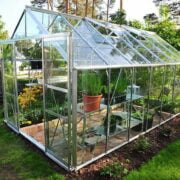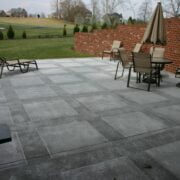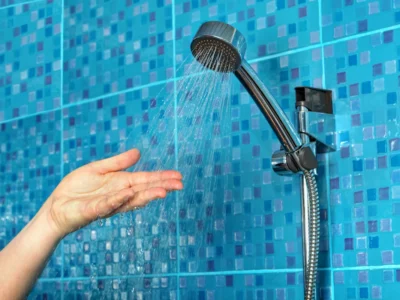Basement leaks can be a homeowner’s nightmare, causing damage to the property, devaluing the home, and even posing health risks due to mold and mildew growth. Understanding what causes basement leaks is the first step toward prevention and effective solutions. In this comprehensive article, we will explore the various factors that contribute to basement leaks, their effects, and the strategies to address and prevent them.
Poorly Sealed Foundation Cracks
One of the most common culprits behind basement leaks is poorly sealed foundation cracks. Cracks in the foundation can occur due to a variety of reasons, including settling of the soil, temperature fluctuations, and structural stress. When water accumulates in the soil surrounding the foundation, it exerts pressure on the walls, forcing moisture through these cracks.
Unsealed foundation cracks can lead to moisture intrusion, resulting in damp and wet basements. Over time, this can cause damage to interior finishes, create an environment conducive to mold growth, and weaken the structural integrity of the foundation.
Repairing foundation cracks is essential. This involves cleaning the cracks, filling them with waterproof sealant, and reinforcing them with epoxy injections for larger cracks. Professional assistance may be necessary for extensive repairs.
Inadequate Grading and Drainage
Improper grading and drainage around the perimeter of the home are another common waterproofing issue. They can contribute to basement leaks. When the ground slopes toward the foundation rather than away from it, rainwater, melting snow, and runoff can accumulate against the foundation walls, leading to water infiltration.
Poor grading and drainage can result in water seeping into the basement through the walls, creating a damp or flooded environment. It can also cause soil erosion, undermining the stability of the foundation.
Correct the grading and drainage issues by ensuring that the ground slopes away from the foundation. Installing downspout extensions and adding proper drainage systems, such as French drains, can help redirect water away from the foundation.
Inefficient Gutter Systems
Clogged or improperly functioning gutter systems can exacerbate basement leakage problems. When gutters are clogged with debris or not functioning correctly, rainwater can overflow and pool around the foundation, increasing the risk of water infiltration.
Water overflow from gutters can saturate the soil around the foundation, leading to basement leaks. It can also result in damaged landscaping, erosion, and compromised structural stability. Regularly clean and maintain gutters to ensure they are free from debris. Consider installing gutter guards to prevent debris buildup. Ensure that downspouts direct water away from the foundation and into properly graded areas.
High Water Tables
In areas with high water tables, groundwater can exert pressure against the basement walls, leading to leaks. A high water table is the level at which the ground is saturated with water, and it can fluctuate due to seasonal changes, heavy rainfall, or nearby bodies of water.
High water tables can cause hydrostatic pressure against basement walls, leading to water penetration. This can result in persistent moisture issues, foundation damage, and mold growth.
Installing a sump pump system with drainage tiles around the foundation can help alleviate the pressure from a high water table. Regular monitoring of groundwater levels and maintenance of the sump pump system is crucial.
Cracked or Deteriorating Basement Floors
Cracks or deterioration in the basement floor can provide pathways for water to enter the basement. Over time, wear and tear, soil pressure, or shifting foundations can cause cracks or damage to the basement floor.
Cracked or deteriorating basement floors can lead to water infiltration, causing wet or flooded basements. Additionally, they may contribute to humidity issues and mold growth.
Repairing basement floor cracks involves filling them with an appropriate sealant and addressing any underlying structural issues. In severe cases, resurfacing the basement floor may be necessary.
Faulty or Inadequate Waterproofing
Insufficient or deteriorating waterproofing membranes or coatings can compromise the basement’s ability to repel moisture. Over time, waterproofing materials can break down or become less effective, allowing water to penetrate.
Poor waterproofing can lead to basement leaks, resulting in water damage, mold growth, and a damp living environment.
Evaluate and maintain the existing waterproofing system. In some cases, it may be necessary to repair or replace the waterproofing membrane, ensuring it remains effective in preventing moisture intrusion. That’s why it is essential to pick waterproofers wisely, looking at various criteria.
Plumbing Leaks and Water Line Breaks
Plumbing leaks or water line breaks within the basement or nearby areas can introduce water into the basement. These leaks can go unnoticed for extended periods, causing significant damage.
Plumbing leaks and water line breaks can saturate the basement, leading to water damage, mold growth, and structural deterioration. Make sure to regularly inspect and maintain plumbing systems within and around the basement. Address any leaks or breaks promptly to prevent basement flooding.
It is essential to make sure that your house is build with top quality materials & workmanship. This is true for concrete, waterproofing and other services. Hiring quality contractors can help ensure that your property will last for years to come with minimum problems such as basement water leaks.










Comments